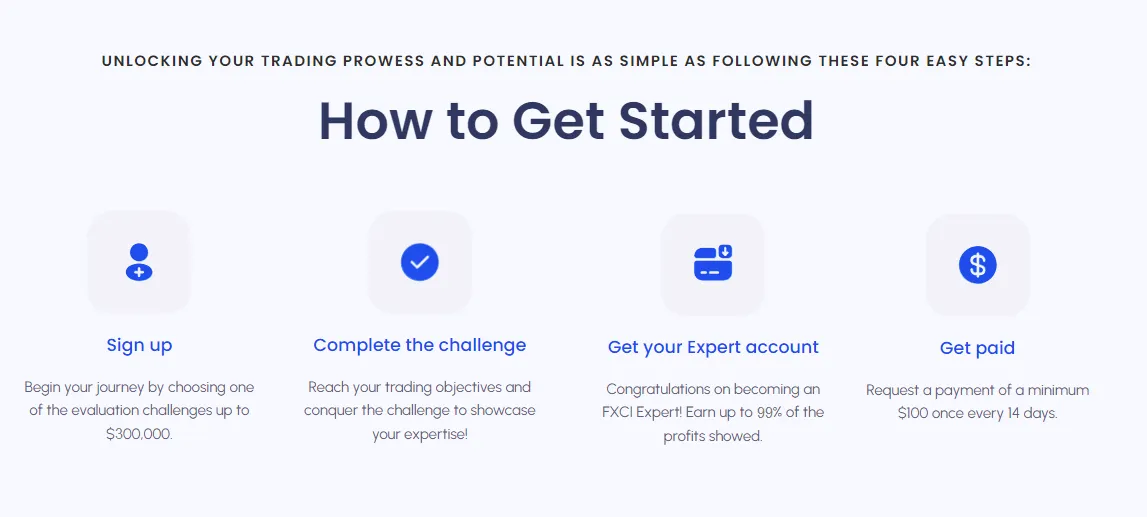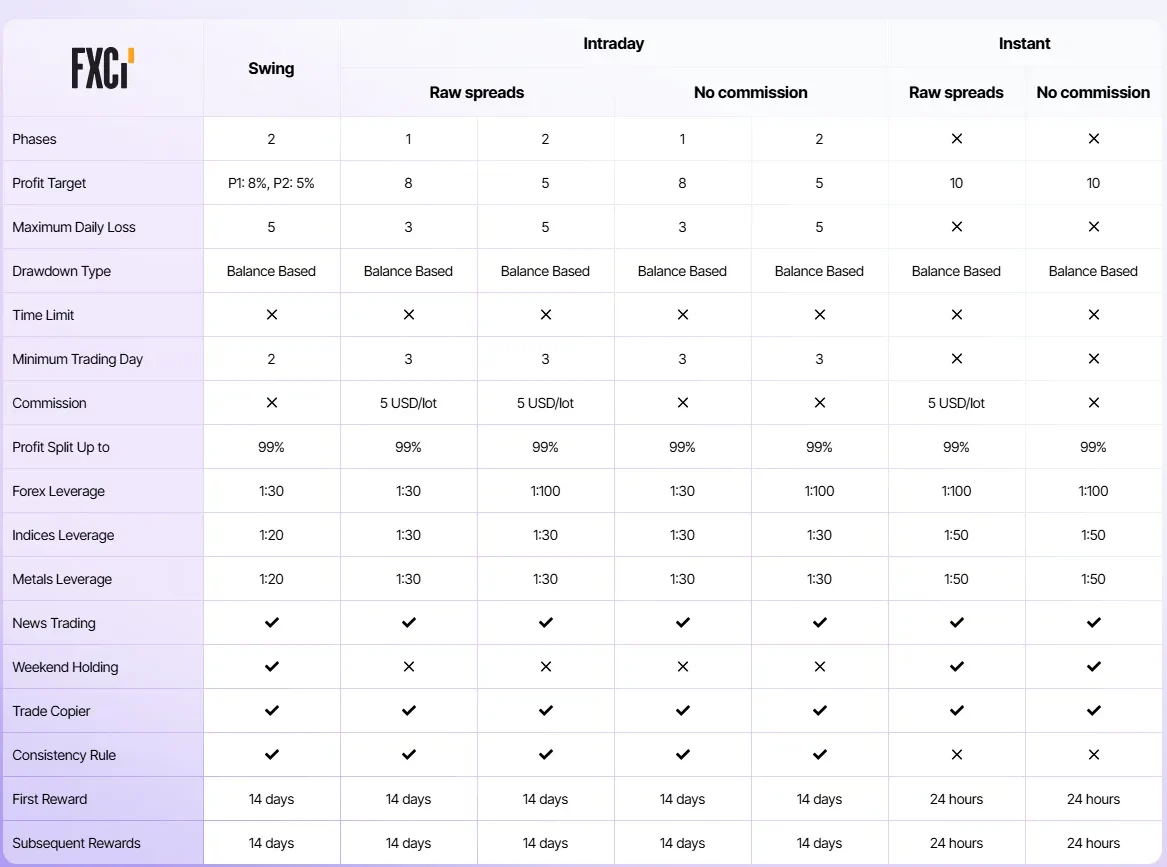Adapting Your Trading Strategy to Prop Firm Requirements
FXCI prop trading firm offers funded accounts up to $300,000 in India. Earn up to 99% profit trading with FXCI’s capital.
Claim 50% Before It’s Gone
Promo «FXCI50» gives you great start in prop trading. Risk-free refund and no time limits with FXCI. Click here 👇
When transitioning from retail trading to prop trading, adapting your trading strategy to prop firm requirements becomes a crucial step for success. Prop firms, such as FXCI, have specific trading conditions that must be met for traders to maximize their profits and meet the firm's standards. This article will explore how to adjust your strategy to fit these requirements, providing practical examples, step-by-step guidance, and insights for effective implementation. Whether you're a seasoned trader or new to the prop trading world, aligning your approach with a firm's guidelines is essential for long-term profitability.

Why It is Necessary
Trading with a prop firm is fundamentally different from personal trading. Adapting your trading strategy to prop firm requirements ensures that you meet the firm's risk tolerance, capital allocation, and profit-sharing model. A solid understanding of these aspects will help you develop a strategy that aligns with your goals and maximizes your potential earnings.
Key Factors to Consider
- Risk Management: Prop firms like FXCI prioritize risk management to protect their capital.
- Leverage and Margin Requirements: These vary from firm to firm and need to be understood clearly.
- Profit Split: Understanding the profit-sharing agreement is vital for strategy formulation.
Adjusting Your Trading Strategy for FXCI's Requirements
1. Risk Management Adjustments
One of the most important aspects is aligning with the firm’s risk management rules. At FXCI, traders must adhere to a maximum drawdown limit. For example, if your account balance is $100,000, and the firm imposes a 10% drawdown rule, you cannot lose more than $10,000 before being at risk of being flagged for underperformance.
Practical Example:
- Initial Capital: $100,000
- Drawdown Limit: 10%
- Maximum Loss Allowed: $10,000
In this case, your trading strategy must account for consistent risk per trade. If each trade risks 2% of the account, you would only be able to lose a maximum of five trades before reaching the drawdown limit.
2. Optimizing Trade Size and Leverage
Prop firms typically offer higher leverage compared to retail brokers, but they also impose stricter rules. FXCI, for instance, may offer leverage of up to 50:1. This means for every $1 of your own capital, you can control $50 in the market. However, with higher leverage comes the responsibility to manage it wisely.
Adjustments for Effective Leverage Use:
- Leverage: 50:1
- Capital Allocation per Trade: If your account size is $100,000, you should limit your exposure to $5,000 per trade to stay within the risk tolerance.
- Stop Loss Management: Use tight stop losses to prevent large losses.
Example:
- Account Balance: $100,000
- Trade Size (1 lot): $5,000 risk per trade
- Leverage: 50:1
In this scenario, you would use the leverage to increase your position size while ensuring your risk per trade remains within acceptable limits.
3. Maximizing Profit Splits
The profit-sharing model at FXCI is one of the most attractive features for traders. With up to an 99% profit split, it’s critical to adapt your strategy to consistently generate profits. The goal is not just to meet the minimum requirements but to maximize the share of profits you keep. By targeting consistent, smaller wins rather than large, riskier trades, you can steadily grow your capital while maintaining profitability.
Example:
- Profit Split at FXCI: 99% to trader, 1% to firm
- Account Profit: $5,000 in a given month
- Trader's Share: 99% of $5,000 = $4,950
This type of setup encourages a focus on risk-adjusted returns rather than sheer trading volume or size. A strategy that emphasizes steady, smaller gains over time is ideal for prop firms like FXCI.
How to Test and Optimize a Prop Trading Strategy
To consistently improve and refine your trading approach, how to test and optimize a prop trading strategy is an essential part of prop trading. Backtesting is one of the best ways to identify what works and what doesn't. Using historical data and simulated trading environments, traders can assess whether their strategies align with the firm's requirements and adjust accordingly.
Steps to Test and Optimize a Prop Trading Strategy:
- Backtesting: Use past market data to test how your strategy would have performed.
- Forward Testing: Apply your strategy in a demo or small-live account to see how it performs in real-time conditions.
- Risk-Reward Adjustments: Fine-tune your strategy to balance risk and reward according to the firm's requirements.
- Track Progress: Continuously monitor performance and make necessary changes to stay aligned with firm requirements.
For example, if you're testing a strategy with a 60% win rate, you might need to refine your stop-loss placements or entry points to ensure consistency with FXCI’s risk management guidelines.
Tables for Better Understanding
Table 1: Example of Drawdown Calculation
| Account Balance | Drawdown Limit | Maximum Loss Allowed | Trade Risk per Trade | Maximum Number of Losses |
|---|---|---|---|---|
| $100,000 | 10% | $10,000 | 2% | 5 |
Table 2: Example of Trade Size Calculation with Leverage
| Account Balance | Leverage | Risk per Trade (2%) | Capital Allocated per Trade | Trade Size (Position Size) |
|---|---|---|---|---|
| $100,000 | 50:1 | $2,000 | $5,000 | 1 Lot |
Table 3: Example of Profit Split Calculation
| Account Profit | Profit Split (99%) | Trader’s Share | Firm’s Share (1%) |
|---|---|---|---|
| $5,000 | 99% | $4,950 | $50 |

Conclusion
Adapting your trading strategy to prop firm requirements is crucial for long-term success in the prop trading environment. Whether you are managing risk, optimizing leverage, or maximizing profit splits, each element of your strategy must align with the firm’s policies. At FXCI, this involves carefully balancing risk and reward while focusing on consistent performance. By tailoring your approach to meet these requirements, you set yourself up for both immediate and sustained profitability.
FAQ
What are the key risk management strategies for prop trading?
Key strategies include setting tight stop losses, managing risk per trade, and maintaining a maximum drawdown limit.
How can I maximize my profit split with FXCI?
By targeting consistent small wins, minimizing large losses, and maintaining discipline in your trading strategy.
What leverage does FXCI offer and how should I manage it?
FXCI offers leverage up to 50:1. It’s important to manage trade size and stop losses effectively to stay within acceptable risk parameters.
How does FXCI's profit split work?
FXCI offers up to 99% of the profits to the trader, meaning your goal should be to generate steady profits while maintaining a low risk profile.
What type of trading strategy works best with FXCI’s rules?
A strategy focused on consistent, smaller gains, with strict risk management, works best for meeting FXCI’s requirements.


